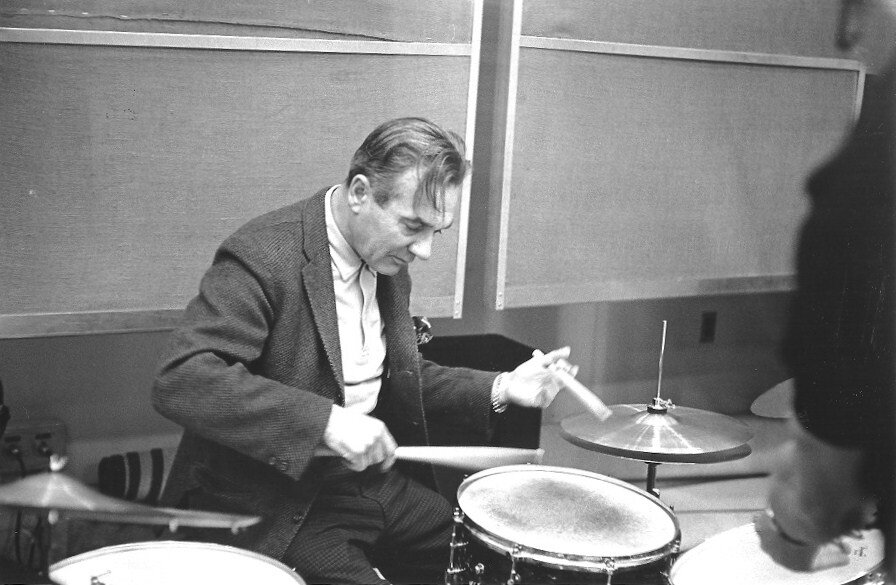Stradivari or A_ __ole?
OK, maybe a little crude but ,now that I have your attention, I have a challenge. What is the most celebrated dum in history? Let's vote. I'll leave it to George Lawrence to tabulate the results, but it should be based on votes, not opinions. Thus, the reason for the title...opinions are like a_ _holes: everyone's got one. Much can be read into that statement.
That said, you guessed it, here's my vote AND my opinion (Hey, it's my article. You don't like it? Write your own article. You're welcome George.)
Gene Krupa's Billy Gladstone Custom Snare Drum
Why? Though you didn't ask, I will tell you. Billy Gladstone snare drums were conceptualized when drums were equipped with calf heads. Much can be and has been said about calf drum heads but paramount is their constant need of attention. Unlike today's synthetic heads that once mounted correctly, need only tweaking to satisfy the whims of the player, calf heads are susceptible to constantly changing climate conditions. While a modern drum can be properly tuned to the required acoustic environment (read, tuned to the room), a calf head drum requires attention to changing environmental conditions. The simple effect of humidity added by an audience entering a room can make a perfectly tuned calf head drum go flat. Not flat in the sense of unplayable, but flat enough that an adjustment is required if you wish perfect tuning. This was the dilemma for Billy Gladstone when he and the Radio City Music Hall Orchestra was elevated from the basement of the Hall to the theatre level. For a master musician like Billy Gladstone, the result was probably unbearable. Of course the drum could be retuned, but Gladstone reasoned the tuning must be accomplished as quickly as possible. Thus, he designed a system whereby both the bottom and top calf heads could be tuned from the top. A full description of his 3-way system can be found in my book Billy Gladstone https://www.amazon.com/gp/product/1574242156/ref=dbs_a_def_rwt_bibl_vppi_i3 . It has been noted that the development of tuning system whereby both sides of a drum is accomplished from one side precedes Gladstone's version, but even a flirting examination of those systems reveals obvious flaws.
Aside from attaining the reputation of a master snare drummer, Gladstone was also an inventor with over thirty patents to his name. Thus his snare drums include several innovations besides the 3-way tuning system. His simple over-center throw off can be activated on or off with a flick of a stick. An internal tone control has a numbered dial plate enabling the player to return the mechanism to a desired setting. Snares, either wire or gut, can be individually adjusted. Again, not new, but combined with other features, makes for innovative drum.
Another consideration for the Gladstone drum is that it was created and built by a master musician. Did the great Antonio Stradivari play the violin? Undoubtedly yes. Was he a master musician? Probably not. He is, after all, known as a master luthier, beginning an apprenticeship with Nicola Amati at age 12. While Amati and Giuseppe Guarneri string instruments are coveted, Stradivarius is the benchmark. So much so that the name Stradivarius is often used to describe the ultimate perfection in any field. I had the pleasure of visiting Cremona Italy, the home of all three masters. Talk about a “vibe”, but I digress. The Gladstone name ranks right up there with all the drum innovators in history, Ludwig, Leedy, Way, Strauss, etc, but he also has the distinction of being a world class snare drummer. Even the not so humble Buddy Rich claimed he was the best. That distinction certainly adds to the celebrated history of his drums. The incredible value of Stradivari instruments is enhanced by the great virtuosos who owned and played them. Currently, the most valued Stradivari sold at auction in 2011 for $16,000,000.



Now, the fait accompli. As of this writing, Gladstone only built 62 drums. Yes, I know Ted Reed claimed 50, but with all due respect, there were at least 62. Most were built for specific players ranging from a dilettante to the most noted virtuosos of all time both symphonic and jazz. Symphonic percussionists Buster Bailey, Mickey Bookspan, Morris “Arnie” Lang (who currently is reproducing the Gladstone snare), Arthur Press and jazz greats Louie Bellson, Cozy Cole, Shelly Manne, Buddy Rich, and of course, Gene Krupa, the father of them all, had custom drums built by the master. Gladstone exemplified Krupa's drum by engraving a plaque “To Gene Krupa The World's Most Renown Drummer From Billy Gladstone”. We can argue who was the “best”, but the most celebrated drummer? I rest my case.
So, there is my vote. What's yours?
